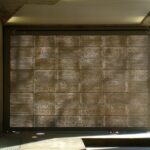How to replace damaged concrete members in structures?
Typical procedures for replacing damaged concrete members in structures are as follows:
Evaluation and Planning:
- Examine the damaged concrete component to determine the extent and cause of the damage.
- Evaluate the structural implications of the damage and determine if replacement is necessary.
- Develop a comprehensive plan for the replacement procedure, including the order of operations and equipment requirements.
Temporary Assistance:
- Before removing the damaged component, provide temporary support for the structure’s stability.
- Use suitable shoring techniques, such as hydraulic jacks or scaffolding, to support the burden carried by the member.
Removing the Damaged Component:
- Using the proper equipment and techniques, demolish and remove the damaged concrete member in a safe manner.
- Utilize techniques such as concrete sawing, drilling, and breaking to demolish the member without causing additional injury.
Surface Treatment:
- Prepare the area for the arrival of the new employee by wiping down the exposed surfaces and removing any debris or contaminants.
- Create a bond between the extant surface and the new concrete member by roughening it. It is possible to use techniques such as sandblasting and wire polishing.
Strengthening and Formwork:
- Install the necessary reinforcement, such as rebars or steel lattice, in accordance with the design specifications.
- Define the shape and dimensions of the new member with formwork. To prevent leaks, ensure appropriate alignment and secure the formwork.
Concrete Placement:
- Mix and distribute fresh concrete into the area that has been prepared, ensuring proper consolidation and compaction.
- Utilize techniques such as vibration and tamping to eliminate air pockets and achieve a dense and uniform concrete mixture.
- Ensure that the concrete surrounds the reinforcement and fills all cavities.
Healing and Safety:
- Utilize appropriate curing techniques, such as wet curing or membrane curing, to enhance the hydration and tensile development of fresh concrete.
- During the initial curing period, protect the newly installed member from premature drying, extreme temperatures, and other damaging conditions.
Completion and Integration:
- Once the concrete has attained sufficient strength, the formwork should be removed, and the exposed surfaces should be finished to match the surrounding structure.
- Utilize appropriate finishing techniques, such as sanding, polishing, or coatings, to integrate the repaired area with the existing concrete.
Importantly, the preceding stages serve as a general guide for replacing damaged concrete members. Depending on the nature of the structure, the extent of the damage, and the recommendations of structural engineers and construction professionals involved in the project, the specific procedures and techniques may vary.
Disclaimer: This content is provided solely for your review. Erusu Consultants takes no liability for this article. The reader is advised to form their own opinion. Please consult a structural engineer before making any final decisions.






